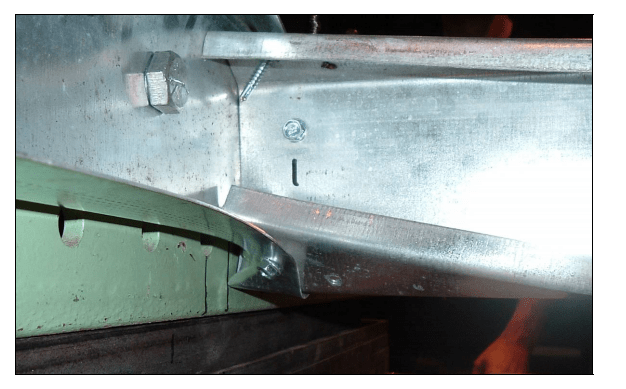KootK
Structural
- Oct 16, 2001
- 18,554
Short Story
I've got some existing studs that require web stiffening in order to slide past the code requirement for h/t < 200. Is there any way around that requirement? Obviously, such studs have some capacity. Is there any defensible way to put a number to that capacity? If I looked at a K=1.0, 1" wide strip of web as a 6" long column might that represent a lower bound on crippling capacity? Any other ideas?
Long Story
- Existing stud work being evaluated as part of an envelope upgrade.
- A previous consultant flagged the studs as being inadequate and requiring replacement.
- It seems that an interior grade of stud was used in an exterior application. Oops.
- Surprisingly, I can make the bending and deflection numbers work for the existing stud.
- I cannot make web crippling work for the existing stud because of the h/t < 200 limitation.
- The existing studs could be reinforced locally but that's a lot of work taken over an entire mid-rise tower.
- Studs with h/t > 200 obviously have some web crippling capacity. If I could determine it defensibly, I could likely eliminate a lot of unnecessary retrofit.
- I'm hesitant to get into FEM or DSM given the effort required but would consider it if I could identify a clear path forward for investigation.
- Some things I've read suggest that the condition with track and screws improves matters. I don't know how to quantify that though.



I've got some existing studs that require web stiffening in order to slide past the code requirement for h/t < 200. Is there any way around that requirement? Obviously, such studs have some capacity. Is there any defensible way to put a number to that capacity? If I looked at a K=1.0, 1" wide strip of web as a 6" long column might that represent a lower bound on crippling capacity? Any other ideas?
Long Story
- Existing stud work being evaluated as part of an envelope upgrade.
- A previous consultant flagged the studs as being inadequate and requiring replacement.
- It seems that an interior grade of stud was used in an exterior application. Oops.
- Surprisingly, I can make the bending and deflection numbers work for the existing stud.
- I cannot make web crippling work for the existing stud because of the h/t < 200 limitation.
- The existing studs could be reinforced locally but that's a lot of work taken over an entire mid-rise tower.
- Studs with h/t > 200 obviously have some web crippling capacity. If I could determine it defensibly, I could likely eliminate a lot of unnecessary retrofit.
- I'm hesitant to get into FEM or DSM given the effort required but would consider it if I could identify a clear path forward for investigation.
- Some things I've read suggest that the condition with track and screws improves matters. I don't know how to quantify that though.




